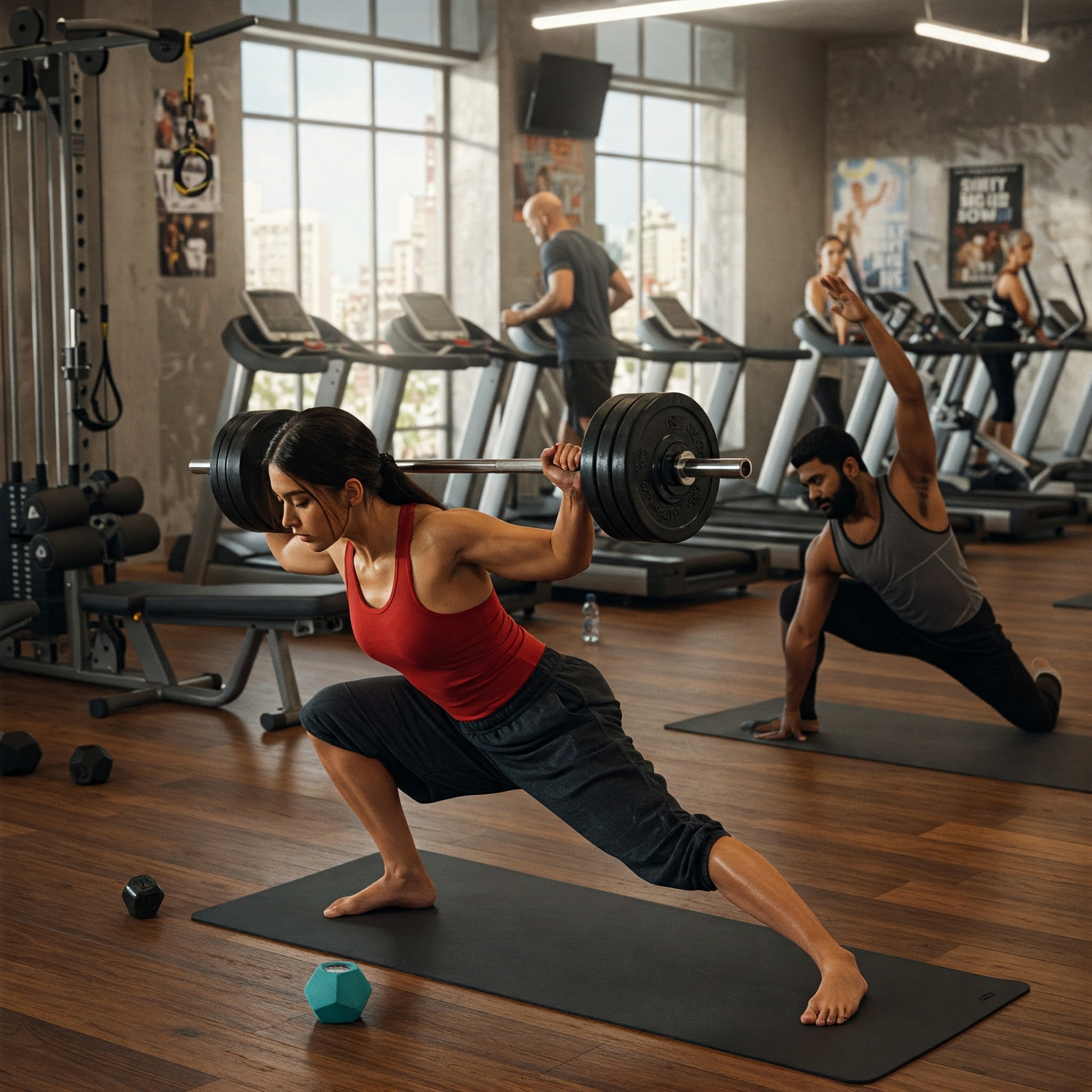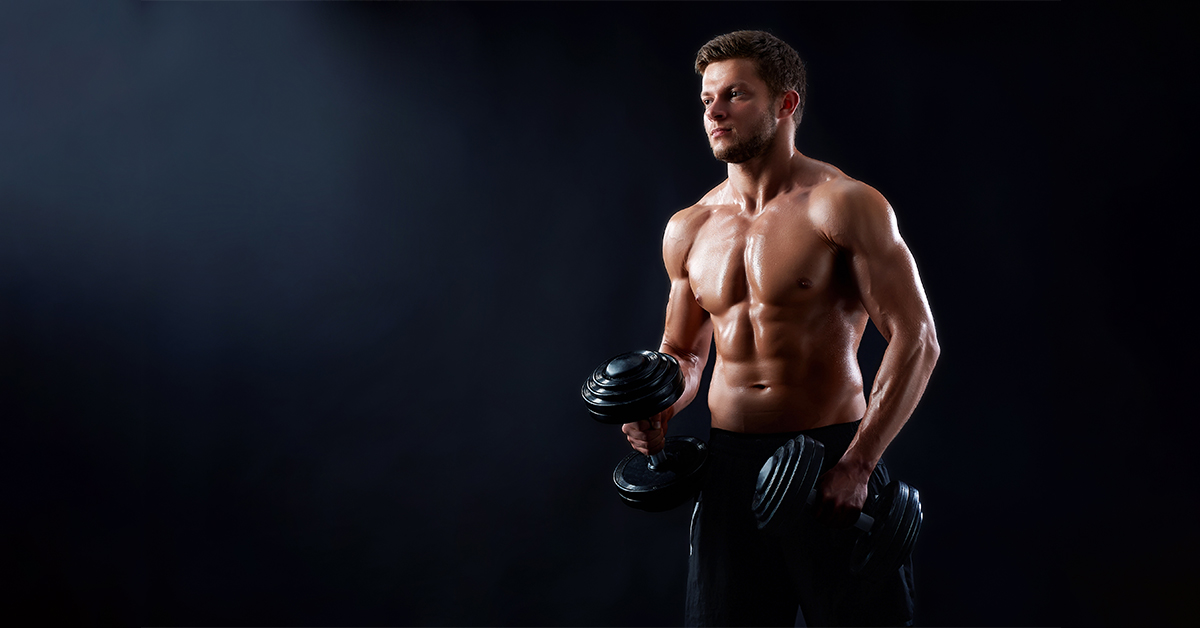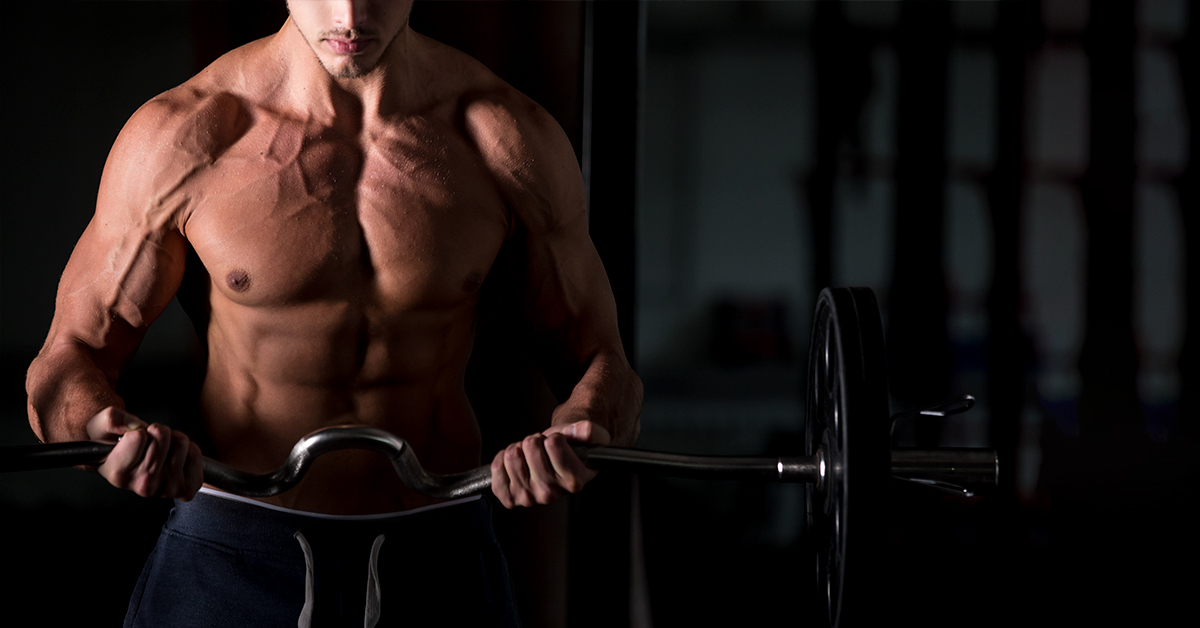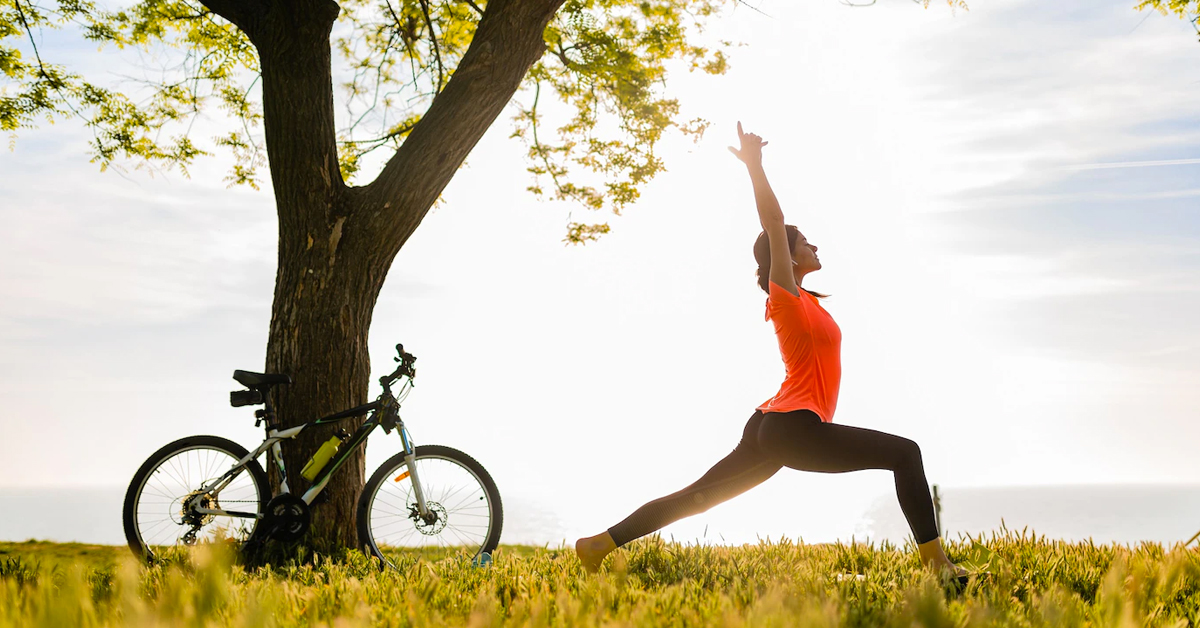Neck pain is something you must have experienced once in a while. It could be the result of a disease or disorder you are suffering from and any of the tissues of the neck could be involved. The disorders which cause neck pain are degenerative disc diseases, neck injury or strain, pinched nerve or a herniated disc. Neck pain could also occur due to common infections like a viral infection of the throat which could lead to swelling of the lymph node as well as neck pain.
Rare infections or medical conditions could also be the cause of neck pain such as tuberculosis, spinal bones in the neck suffering from osteomyelitis or septic discitis and meningitis where you would suffer from neck stiffness. The neck muscles are affected by certain conditions like polymyalgia rheumatica or fibromyalgia causing neck pain. You could also have neck pain from a wrong posture while sleeping with a pillow under your head.
The first step for determining the exercise for your neck pain would be to consult a specialist. Once the exact cause of your neck pain has been determined, the appropriate exercise can be started. The intensity of neck pain varies from a sharp pain that you get when performing normal movements to a dull aching sensation which is unbearable by the end of the day. When you are certain about the exercise you require based on your physician's diagnosis, it is equally important to find a qualified trainer to supervise your exercise so that you don't injure yourself while exercising. Here is where the proper technique comes into play and the trainer will guide you all the way in this regard.
It would be advisable for you to avail the services of a practitioner for soft tissue massage as well as manual stretching as the vertebrae of the neck are linked to many other muscle groups like the chest, shoulder and back.
You need to understand that you might have difficulty while performing the chosen neck exercises as part of a treatment program but they should not result in pain or aggravate the pain. If you experience any pain or discomfort, seek medical evaluation immediately.

Neck exercises are required not only for the treatment of neck pain but also for the prevention of neck pain. They are beneficial in relieving you of stiffness, tightness as well as tension. You have less pain and the flexibility of your neck improves. Also, you are less prone to cervical spine and neck injuries.
A stronger neck has a positive impact on the other muscles of your body like the trapezius muscle (one of the important muscles of your back and is key to stabilizing, rotating as well as moving the scapula or shoulder blades) and the deltoids (a triangular muscle covering the uppermost section of the arm as well the top part of the shoulder). Neck exercises also lowers the chances of you suffering from injuries, general neck pain or stress.
Prevention is better than cure and this is equally applicable for neck pain. The best way to avoid neck pain is through neck toning as well as strengthening exercises. These exercises make your neck muscles stronger and make you less prone to injury. When these exercises are performed under supervision, you will experience long-term benefits.
Before you start the chin tuck exercise ensure that there is something firm supporting your back like the back of the chair (provided it is sturdy) or a wall. The back of the head, your shoulders, as well as your upper back, should be firmly placed against the wall. Look straight ahead and ensure that the bottom of your chin is parallel to the floor.
You should now move your chin slightly backwards and go down slightly. Your ears should be in line with the shoulders and you would experience a stretch at the back part of your neck. Stay in this position for 10 seconds and slowly release.
It is advisable to do 10 repetitions per day. You can perform while lying on the floor.
Exercises for neck extension are normally done in a seated position. A neck extension machine comprises a seat, four handles as well as a head pad. It is important for you to adjust the seat according to your height so that the head rests comfortably on the head pad.
The neck machine provides a variety of options for exercises. You can perform the forward, side and backward neck extensions. Neck extensions, if done properly by following the right technique, help in strengthening the neck muscles. With stronger neck muscles you will be protected from neck injuries and your posture will improve. It is important to remember that the neck machine should be used under the supervision of a trainer.
There are different types of neck machines and each serves a different purpose. If you need to increase neck muscle mass, then a weighted neck machine would be a great choice. For improving your posture and avoiding neck strain, the best bet would be neck straps or pulleys. As the name suggests, the Posture Pulley neck exerciser is meant to correct a posture where you lean forward too much.
It has a neck strap for strain and injury prevention. With proper technique, the strap in this machine will ensure the muscles of the back of your neck are lengthened. The wide neoprene section should be wrapped around your head and hold the handles on both sides with a tight grip. Straighten the arms while pulling the handles forward and stay in this position for 5 to 10 seconds.
The Champion Neck machine has pivots, pins that are adjustable as well as has a height-adjustable seat. It is a 4-way exercise machine which strengthens every muscle of your neck except the rotator muscles. It is important to maintain a good form while using it in order to prevent injury.
The Hydra-Gym Power Neck Machine is a standing machine with a steel frame where weights are used as resistance. As you stand while using this machine, the stabilising muscles of the body are engaged. The resistance provided is twice that you will get during a workout and it can be adjusted according to your strength.
For neck retractions, it is important to initially ensure that you are able to gently move your head keeping it in alignment with the neck. When performing neck retraction exercises, your forehead should be facing the ground and your arms should be by your side. Raise the head slightly by moving it back but ensure that it is a small movement. There should be no breaks in the neck. The head should extend from the spine. For both protraction as well as retraction, stand up straight.
Both shoulders should be brought forward as slowly as possible. Try to connect both shoulders to each other as far as you can. Try to do the same in the reverse position taking the shoulders as far back as possible and squeeze them to try connecting them.
Repeat this exercise 10 times.
Lie with your face down on a bench keeping your whole body straight. Hold a weight plate behind your head with your hands. Your shoulders should be placed beyond the end of the bench so that the upper chest, face and neck are kept away from the bench. With the plate held behind the head, lower your head slowly as you inhale. Move your head to the starting position slowly in a semi-circular way as you exhale. Stay in this position for a second.
Repeat the exercise as recommended. Be careful and ensure there are no sudden movements or jerking.
There are five types of isometric neck exercises which can help relieve neck pain to a great extent. They are:
The process in this exercise is similar to the previous isometric lateral flexion with the only difference being the position in which the hand is being placed.
This will help with mobility as well as the flexibility of the neck. You will also get relief from muscle spasms.
When it comes to exercises for neck pain, it is important to ensure that you take the prescribed medications so that your pain is bearable and you are able to perform the exercises properly. If the neck pain is intense or you have a hand or arm weakness, it is advisable not to start exercises. Neck pains are usually not very serious. In milder cases, it should disappear in a matter of 2 weeks. It would take about 4 to 6 weeks for you to completely recover. You should continue with the exercises even after you have completely recovered.
There are many types of neck stretches. However, the most effective ones are:
You need to sit to perform this exercise. Start with turning your head a bit to the left and look down at your left knee. Place your left hand on your head, slowly pulling your head in the direction of the left knee to the point where the upper right part of the trap (the muscle on the right-hand side behind your neck) feels stretched.
Maintain this position for 30 seconds. Repeat the process thrice for both sides.
This exercise also needs to be performed while you are seated. The right-hand needs to be placed slightly at the back of your right shoulder. Pull your head gently to the left side with your left hand to the point where the shoulder blades on the right side along the neck feels a stretch.
Stay in this position for 30 seconds. This has to be repeated thrice for both sides.
You need to be lying with your face down on a mat. There should be a folded towel to rest your forehead. This ensures that the neck stays in a neutral position. Your arms should be by your side with your palms facing downwards to form the shape of the letter A. Next, turn your hands as well as your thumbs towards the ceiling. Raise your arms and squeeze the shoulder blades together.
Return to the original starting position. Do sets of 2 or 3 with each set having 15 reps.
You should be lying on a mat with your face down. There should be a towel folded to provide support to your forehead which keeps the neck in a neutral position. Your arms should be extended to your sides forming the shape of the letter T. Move your arms upwards while squeezing your shoulder blades together.
Get back to the original position. Do sets of 2 or 3 with each set having 15 reps.
You should be lying on a mat with your face down. There should be a towel folded to provide support to your forehead which keeps the neck neutral.
Your arms should be extended in front of you with the palms facing each other forming the shape of the letter Y. Move your arms upwards while squeezing your shoulder blades together.
Slowly move back to the original position. Do sets of 2 or 3 with each set having 15 reps.
Of the many neck strengthening exercises out there, the following ones will help you relieve neck pain in the most effective way.
For this exercise, your back should be against the wall. The bottom of the wall should be 4 inches from your feet. The back of your head should be placed on the wall.
The elbows, back of your hands as well as fingers, and forearms should be against the wall. The wrists should be above the level of the shoulders. Keeping your head, arms, hands and fingers in contact with the wall, gently slide your hands over your head and then down to the starting position. Do 10 repetitions 3 to 5 times during the day.
Begin with putting one hand on the side of the head. Then try rotating your head sideways towards the shoulder.
Provide resistance to the head with your hand as the shoulder tries to come in line with the chin. Stay in this position for 5 seconds. Go back to the original position and repeat the process with the opposite hand.
This exercise not only helps not only the shoulders but also the neck region as well. The muscle connecting the neck to your shoulders is activated thereby strengthening the lower part behind your neck. You can do this exercise in a seated or standing position.
Keep your back and neck straight. While squeezing the blades of your shoulder as much as possible, try to slightly tuck in your chin. Maintain this posture for 5 seconds.
For best results, it is advisable to do 10 repetitions.
Low-impact cardio activities such as the ones mentioned below help in the reduction of neck pain.
When starting with an exercise program for the first time, your best bet would be walking. Being a low-impact activity, it does not put pressure on the neck and would be suitable for neck injuries which are severe. Walking helps in strengthening your bones as well as your muscles since it involves bearing your weight. If you are able to increase the pace, then walking will help with weight loss as well as better cardiovascular fitness. Needless to say, your posture is extremely important while walking with the back and neck in one straight line.
If your neck injury is not too severe, you can take up jogging which requires a certain pace. Approval from your doctor is important before taking this up.
Jogging indoors on a treadmill is a better choice compared to jogging outdoors as you run the risk of being injured when you are jogging on the street or a trail where the surface might be uneven.
It goes without saying that good posture is very important and you need to ensure that your torso is erect. The back, shoulders and head should keep the shoulders and the hip as the central point.
Another low impact activity for the neck injury which involves weight bearing is cycling. As always, it must be approved by your doctor. You need to take certain precautions before starting it.
A stationary bicycle or a spinning class are better options compared to riding a bicycle on the street as there might be bumpy patches which might aggravate your injury or worse still, you could meet with an accident.
The handlebars of the stationary bicycle should be adjusted so that they are easy to reach and don't exert strain on your neck.
As an aerobic activity, swimming exerts the least amount of stress as your body weight is supported by water. It exerts the least amount of pressure on your joints, muscles or bones.
The freestyle stroke is not recommended by the Santa Cruz Acupuncture Orthopedics and Sports Medicine Clinic as there are repetitive movements of the neck which could aggravate your pain.
Other strokes like the breaststroke, forward crawl or the side stroke could also be detrimental for your neck according to the clinic. The strokes which have been recommended are the backstroke as well as the back crawl. Other activities which would help are walking in the water or jogging. You could also take up an aerobics class which are held in the water.
Neck pain is a result of the unhealthy lifestyle that we lead today to the way smartphones and computers have become a permanent fixture in our lives Neck stiffness occurs as a result of the weakness of the muscles from poor posture.
Some simple changes like keeping the monitor at the level of the eye, not slouching while working and refraining from twisting or tilting your head when working on the computer can prevent neck pain. You should also take breaks while working. Try stretching while you are at your desk by rolling your shoulder back and downwards 10 times. You could also try squeezing the shoulder blades together 10 times.
Your sleep posture could also be the cause of your neck pain. Avoid sleeping on your stomach. Alternate applications of heat or ice could relieve the pain. Avoid sudden movements. The range of motion exercises should be done slowly from side to side or up and down.
Use a firm mattress and avoid pillows. You could consult your physician for a soft neck collar.




























Neck pain can impair the quality of your life if not treated at the right time. There are some simple measures to relieve your pain, ranging from your sitting posture while at work or the way you sleep.
Treatment for neck pain depends on the level of intensity. There are various exercises for the neck which not only help in curing your neck pain but also help prevent any further injuries to the neck. When opting for an exercise routine for your neck, ensure that you have the physician's nod as well as perform the exercise under trained supervision. It is imperative to note that these exercises should be resumed even after you have found relief from the pain.
So, find a solution to get rid of that 'pain in the neck!'
Disclaimer: The tips & exercises suggested are the personal opinions of the writer. Kindly consult a licensed physician/dietitian/practitioner before implementing the same.